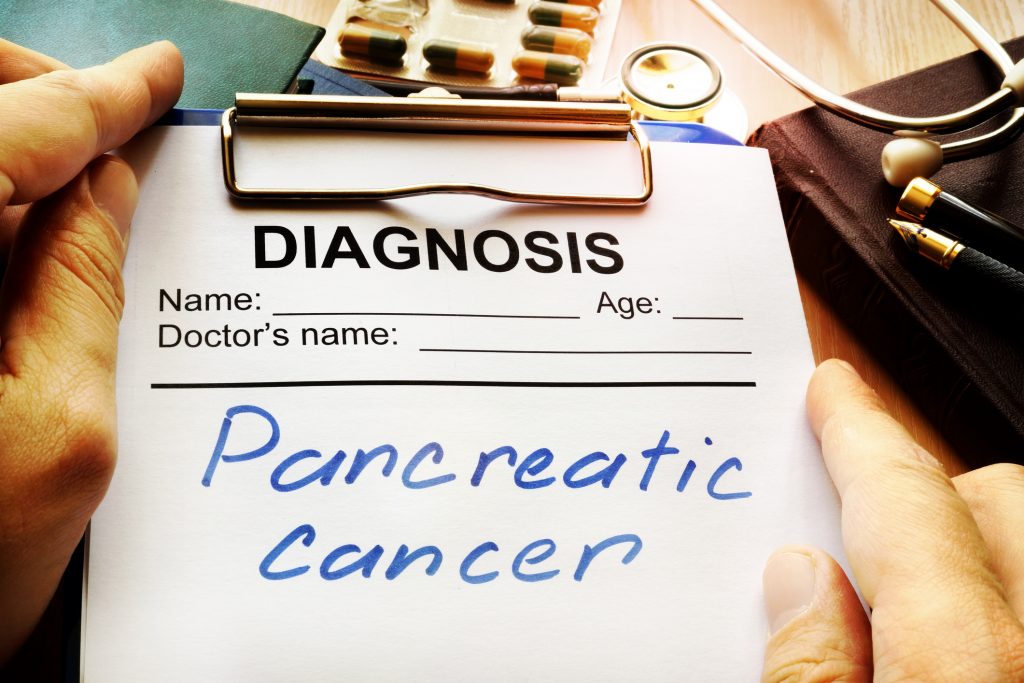
November is Pancreatic Cancer Awareness Month, and that will bring increased attention to the fact that the disease is so difficult to diagnose in its early stages when it’s much more treatable. In Everett and elsewhere throughout the US, pancreatic cancer is one of the most difficult cancers to detect early on, and that is one of the biggest reasons why it has become so deadly. Living without a pancreas is extremely challenging because the pancreas provides insulin and other hormones essential to the digestive process. Without a pancreas, you would be obliged to survive solely on insulin shots, and your digestive processes would be far less efficient. Senior home care professionals sometimes provide care for individuals fighting pancreatic cancer, and this generally involves keeping them as comfortable as possible through the process.
Diagnosing pancreatic cancer
Pancreatic cancer remains one of the most difficult challenges in all of medicine since diagnosis of pancreatic cancer generally is a death sentence for most people. In the United States, people diagnosed with pancreatic cancer will only survive as long as five years in about 10% of all cases. The only possible treatment for long-term survival is catching the tumor in time before it has a chance to spread. Therein lies the problem. In the vast majority of cases, pancreatic cancer is only detected months after people start to show recognizable symptoms of the cancer, e.g. fatigue, abdominal pain, etc.
What makes it even more difficult is that these same symptoms can be associated with a whole catalog of other medical conditions other than pancreatic cancer. Yet, the problem will continue to grow in this country and around the world because, by the year 2030, pancreatic cancer is expected to be the second-largest cause of cancer deaths in the US. This is mostly because of the aging population and the increasing level of obesity in citizens.
Difficulty in diagnosing
The pancreas is located behind the stomach, deep inside the body, so scans for tumors cannot easily reach the pancreas. Tumors also can’t be seen or felt by medical professionals during any kind of routine physical exam. For the most part, no symptoms are evident in people who have a pancreatic cancer tumor until the tumor becomes extremely large, or it has already spread to other organs. By that time, only 15% to 20% of patients can undergo any kind of surgery for tumor removal, which means the vast majority are terminal.
For some kinds of cancer, there are screening tests or exams which can be used even if people show no symptoms of cancer. However, there are no recommended routine screenings for people at risk of developing pancreatic cancer. No screening test has ever been developed which effectively lowers the risk of dying from pancreatic cancer. Another reason pancreatic cancer is so difficult to diagnose is that 90% of the people who actually have a developing tumor show no symptoms whatsoever. By the time anyone does show symptoms of the disease, they are often confused with other medical conditions and discarded as a possible marker for pancreatic cancer.
Best hope for screening
Some minor successes have been achieved in screening individuals who are members of families thought to be at high risk for developing pancreatic cancer. High risk means that other people from the same family have developed pancreatic cancer, and the predisposition for it may have been passed on through genes. In such cases, doctors have used endoscopic ultrasound tests and magnetic resonance imaging to screen for pancreatic cancer, and have been able to find some early treatable cancers.
These kinds of tests are not used on the general public, but only on family members considered to be at high risk because of genetics. This means that anyone not considered to be in a high-risk pool would probably not be screened for pancreatic cancer, and would probably also not have early treatment to catch the cancer before it spreads. Endoscopic ultrasound makes use of a flexible ultrasound probe that gets inserted through the mouth, and this can be quite sensitive to early markers for cancer. However, it requires the patient to be sedated and then examined by an endoscopist who is very skilled.
Magnetic resonance imaging is somewhat less invasive, but it also carries the risk of radiation exposure and it’s expensive to administer. It also requires a skilled radiographer in order to interpret the images which result. All this means that the imaging techniques which are most effective in detecting pancreatic cancer are generally too expensive to administer to ordinary patients, and would only be carried out for those thought to be at high risk.
Scientists and researchers are working on improving the early detection of pancreatic cancer, primarily in the area of improving screening for the disease. Liquid biopsies are being tested since they can identify markers in the bloodstream which indicate the potential for pancreatic cancer, but these are far from reliable at present and do not provide conclusive results. Until technology finds better and less expensive ways to screen for early signs of pancreatic cancer, it will remain one of the most difficult – and most deadly – types of cancer to detect.
